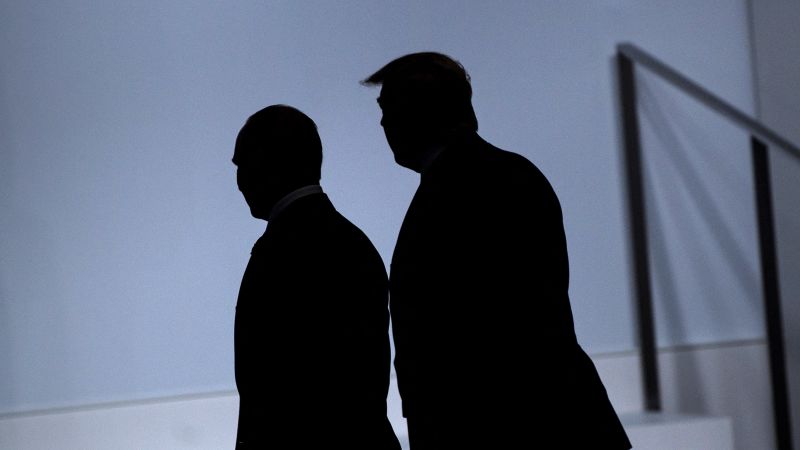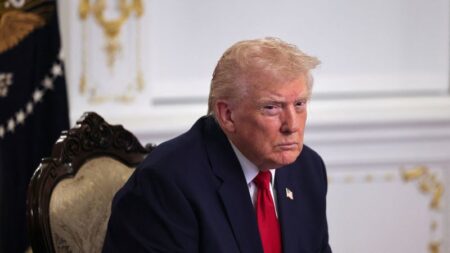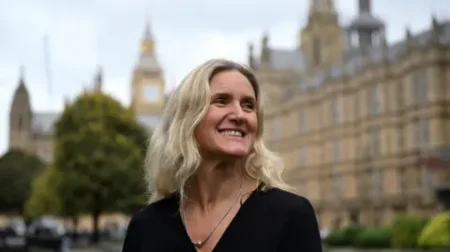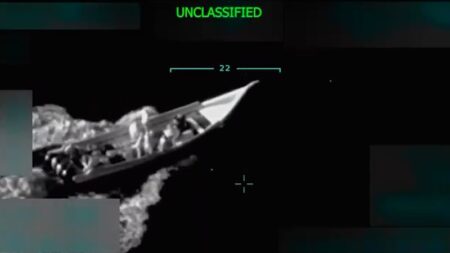In anticipation of an important summit between Presidents Donald Trump and Vladimir Putin, American officials are working diligently to finalize details as the event approaches. Scheduled for Friday in Alaska, the summit raises several logistical and geopolitical questions that remain unanswered just four days prior to the meeting. As of the beginning of the week, there had been no announcement regarding the venue, with members of the Trump administration still traveling to Alaska to evaluate potential locations for the sit-down between the two leaders.
The discussions expected during the summit are crucial, particularly as President Trump views this as an opportunity to make significant strides towards resolving the ongoing conflict in Ukraine. The uncertainty surrounding aspects of the summit reflects the complicated situation Trump finds himself in nearly seven months into his second term. Initially optimistic about leveraging his relationship with Putin to bring an end to the war in Ukraine, Trump has faced disillusionment due to various actions taken by the Russian leader, making this upcoming meeting a critical test of Trump’s faith in direct diplomacy.
According to NATO Secretary General Mark Rutte, who has built a close relationship with Trump, the summit presents a pivotal chance to evaluate Putin’s commitment to concluding the war. The urgency of this meeting has prompted Trump to convey to his advisors that any effort aimed at ending the conflict is worthwhile, even if such efforts do not yield the desired outcomes. Notably, the preparation for this summit has progressed at an accelerated pace, contrasting with the typical duration of several weeks to months for high-profile meetings, especially with adversaries like Russia.
A number of challenges are looming over the organization of the summit. One major concern revolves around whether Ukrainian President Volodymyr Zelensky would be invited to participate. While he was absent from discussions when Trump first announced the meeting, the White House has not ruled out extending an invitation to Zelensky, despite prioritizing the direct Trump-Putin dialogue. The U.S. Ambassador to NATO, Matthew Whitaker, mentioned that should including Zelensky become a strategic option, Trump would act accordingly, indicating there remains time to make this decision.
Ukrainian officials are also ready to act, signaling that Zelensky would travel to Alaska should he receive an invitation. Their remarks indicate a recognition that the trajectory of the Trump-Putin discussions will significantly impact any potential inclusion of Zelensky. The Ukrainian ambassador to the U.S., Oksana Markarova, emphasized Zelensky’s readiness to attend any meeting aimed at advancing peace, but the outcome of Trump’s summit with Putin would be pivotal.
Another level of complexity arises from details discussed between Putin and Trump’s envoy, Steve Witkoff. While specifics of Putin’s proposition remain unclear, they reportedly include significant territorial concessions from Ukraine, particularly concerning the eastern Donbas region—which is already partially occupied by Russia. European leaders are monitoring the situation closely, awaiting clarification from the U.S. about the implications of Putin’s proposal. As it stands, the plan suggests potential Russian control over Donbas while the fate of additional contested regions like Kherson and Zaporizhzhia hangs in the balance, alongside concerns regarding future U.S. security commitments.
To facilitate the negotiation process, Trump’s aides recognize the importance of garnering support from European allies. Over the weekend, they engaged in discussions aimed at conveying Trump’s objectives while also absorbing concerns regarding Putin’s approach to the talks. During a meeting in England, Vice President JD Vance listened to insights from various national security advisors from key European nations who reiterated the need for certain conditions, such as implementing a ceasefire, before any further negotiations with Putin can take place.
Moreover, a consensus among European leaders emerged asserting that Ukraine must be involved in any discussion of its fate. As discussions progress, Zelensky expressed optimism regarding U.S. receptiveness to Ukraine’s position, believing that Ukrainian arguments are being acknowledged. On the U.S. front, Trump is also emphasizing the need for Ukraine’s inclusion in negotiations regarding its future, reinforcing the stance that American allies presented.
Heading into the summit, both sides acknowledge that no agreement may fully satisfy either party, yet they recognize the necessity of open dialogue. Vance pointed out that while neither Russians nor Ukrainians may be entirely pleased with the conclusion, negotiation efforts are essential to foster a pathway forward in this protracted conflict.











